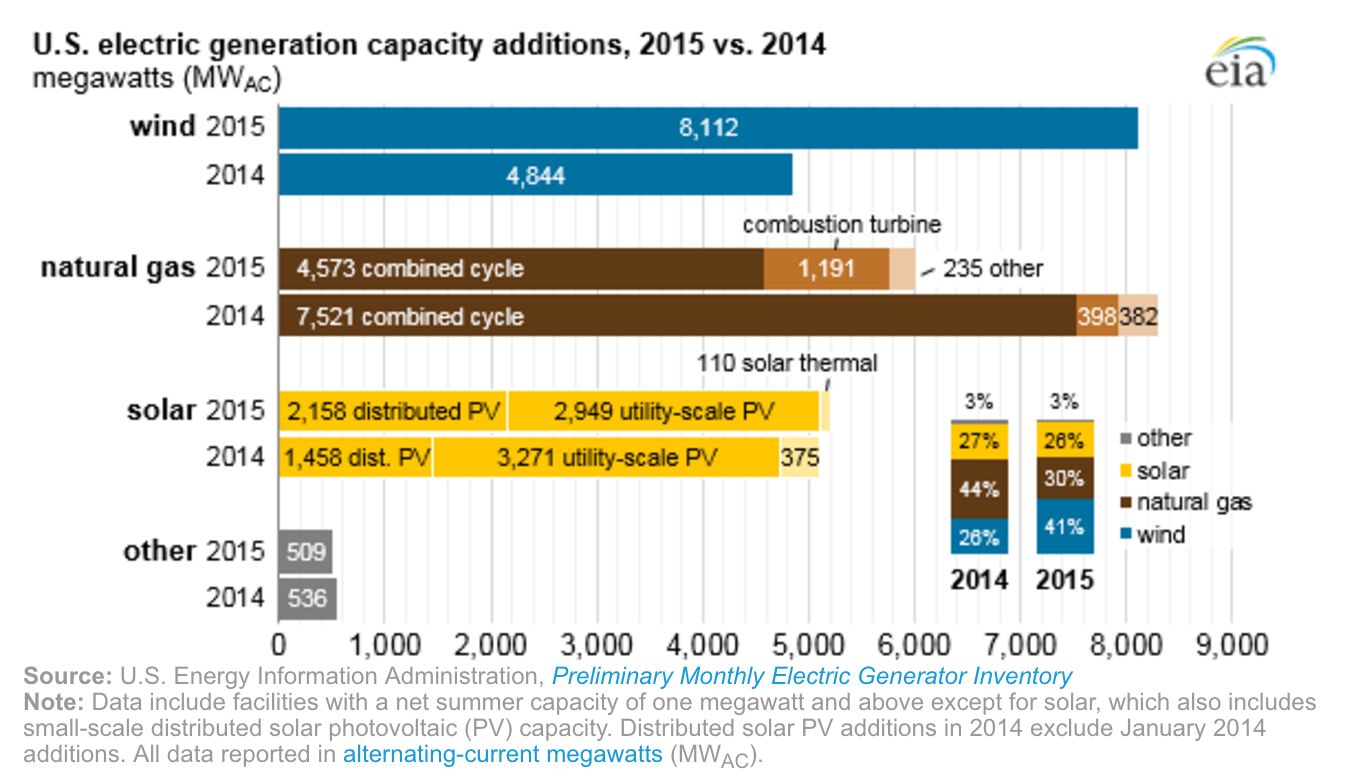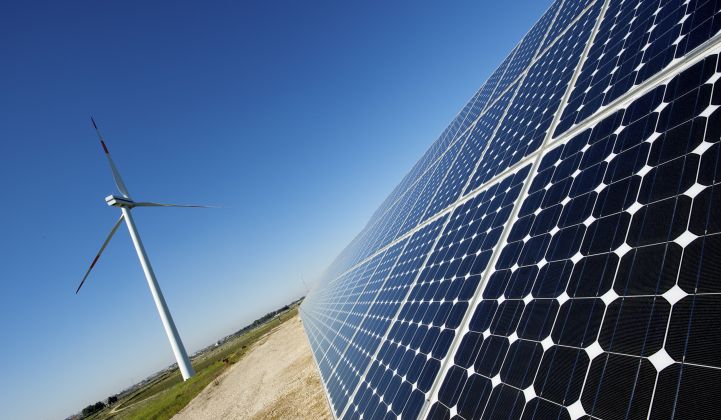For those of us who have grown weary of each new month setting a "hottest-ever" record, here’s a more encouraging monthly trend.
For each month this year, renewable energy production in the U.S. has exceeded the same months in all previous years, according to the U.S. Energy Information Administration. That achievement is particularly notable because it happened in spite of below-average hydroelectric output caused by drought along the West Coast.
The data runs through June and it counts utility-scale wind, solar, hydro, geothermal and biomass plants with capacity greater than 1 megawatt, as well as distributed solar resources like rooftop installations. The non-hydro renewables were clearly above the range of non-hydro production from previous years, and have passed hydro production this year, too.

It just so happens that half of U.S. hydropower capacity sits in California, Oregon and Washington, precisely the region most afflicted by drought in recent years. Production last year dipped well below the average during the summer months, and overall produced the lowest amount since 2007. This year has seen consistently stronger hydro output than 2015, helped in part by El Niño rainfall.
Hydro-dependent regions will likely face more such difficulties in an era of shifting climates. To the extent that climate change alters rainfall patterns, it can make it harder to produce clean energy through hydropower, thus making it harder to reduce greenhouse gas emissions from the power sector. Solar, on the other hand, has not been stymied by the lack of rain.
The data, then, illustrates rookie renewables gradually catching up to the reigning champion. Hydropower has produced 85 percent of cumulative renewable energy in the U.S. for the past 65 years, but hasn’t added significant new capacity for about 20 years. It now produces 6 percent of U.S. electricity; wind yields 4.7 percent and solar clocks in at 0.6 percent

The Department of Energy thinks the hydro slowdown can change; it released a plan in July charting a path to 13 gigawatts of new hydro generation capacity by 2050. That rebound is far from certain, though, as it relies on technological breakthroughs, difficult licensing procedures and redesign of market structures.
Meanwhile, wind added about 13 gigawatts in 2012 alone, and wind and solar collectively supplied the majority of new capacity built in the U.S. last year. Non-hydro renewables topped 10 percent of monthly U.S. production for the first time in March of this year, and did so again in April, according to the EIA. That’s easier to do when there isn’t huge demand for heating and cooling, so overall load is low. Nonetheless, the signs are pointing to a reshuffling in the rank order of contributors to the American grid.



